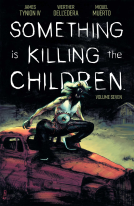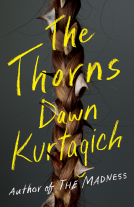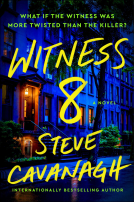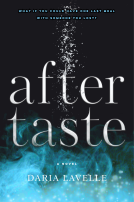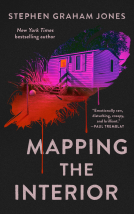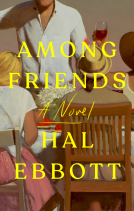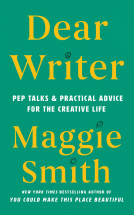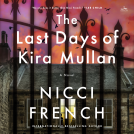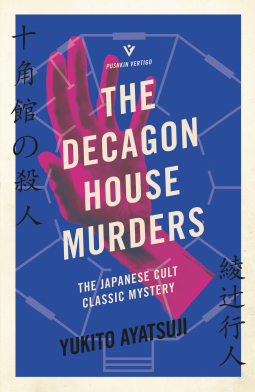
The Decagon House Murders
by Yukito Ayatsuji
This title was previously available on NetGalley and is now archived.
Send NetGalley books directly to your Kindle or Kindle app
1
To read on a Kindle or Kindle app, please add kindle@netgalley.com as an approved email address to receive files in your Amazon account. Click here for step-by-step instructions.
2
Also find your Kindle email address within your Amazon account, and enter it here.
Pub Date May 25 2021 | Archive Date May 05 2021
Pushkin Press | Pushkin Vertigo
Talking about this book? Use #TheDecagonHouseMurders #NetGalley. More hashtag tips!
Description
A hugely enjoyable, page-turning murder mystery sure to appeal to fans of Elly Griffiths, Anthony Horowitz, and Agatha Christie, with one of the best and most-satisfying conclusions you'll ever read. A classic in Japan, available in English for the first time.
From The New York Times Book Review:
"Read Yukito Ayatsuji’s landmark mystery, The Decagon House Murders, and discover a real depth of feeling beneath the fiendish foul play.
Taking its cues from Agatha Christie’s locked-room classic And Then There Were None, the setup is this: The members of a university detective-fiction club, each nicknamed for a favorite crime writer (Poe, Carr, Orczy, Van Queen, Leroux and — yes — Christie), spend a week on remote Tsunojima Island, attracted to the place, and its eerie 10-sided house, because of a spate of murders that transpired the year before. That collective curiosity will, of course, be their undoing.
As the students approach Tsunojima in a hired fishing boat, 'the sunlight shining down turned the rippling waves to silver. The island lay ahead of them, wrapped in a misty veil of dust,' its sheer, dark cliffs rising straight out of the sea, accessible by one small inlet. There is no electricity on the island, and no telephones, either.
A fresh round of violent deaths begins, and Ayatsuji’s skillful, furious pacing propels the narrative. As the students are picked off one by one, he weaves in the story of the mainland investigation of the earlier murders. This is a homage to Golden Age detective fiction, but it’s also unabashed entertainment."
Advance Praise
'A terrific mystery, a classic of misdirection very much in the manner of Agatha Christie or John Dickson Carr' Washington Post
‘Behold, the perfect escapist drug! If I could crush this book into a powder and snort it, I would.’ Vulture
'A real page-turner... Highly recommended' Classic Mystery
'Ayatsuji's brilliant and richly atmospheric puzzle will appeal to fans of golden age whodunits... Every word counts, leading up to a jaw-dropping but logical reveal' Publishers Weekly, starred review
'A stunner of a plot, with an ending which I simply could not believe when it was first revealed... Rivals Soji Shimada's The Tokyo Zodiac Murders for sheer audacity and ingenuity' At the Scene of the Crime
‘A knowing tribute to classic crime, it features all manner of puzzles, including locked rooms, jigsaws and magic tricks.’ Mark Sanderson, The Times
‘highly ingenious’ Laura Wilson, Guardian
Available Editions
| EDITION | Other Format |
| ISBN | 9781782276340 |
| PRICE | $14.95 (USD) |
| PAGES | 288 |
Featured Reviews
Firstly, wow.
If you love the intricacies and twists of Agatha Christie’s ‘And Then There Were None’ then you will adore the English translation of Yukito Ayatsuji’s ‘The Decagon House Murders.’
The premise is this; seven students decide to spend a week on Tsunojima Island off the coast of Japan. Six months earlier the previous residents of the island were brutally murdered, and the case remains unsolved. Soon after the students’ arrival they begin to suspect that someone intending to kill them one at a time, but their identity is currently unknown. Meanwhile, back on the mainland, a former member of the student club receives a letter blaming him for the death of a young woman who died at a party a year earlier, and the girl in question just happened to be the daughter of the murdered island owner. After learning that several other people received a similar letter, he too begins to suspect that something sinister is happening.
I had to get my pen and ‘murder board’ notebook out for this one as it was truly excellent. From start to finish you could get closer to who you think is responsible and then be sent off in a completely different direction. I think at times I was too confident in my ‘armchair detective’ role honed from seasons of Midsomer Murders, and the author somehow knew this. The second I got even remotely confident in my far-flung theory, he shot it down in an aggravatingly logical manner. However, it wasn’t impossible to work out who was responsible, as long as you looked carefully past all the threads of misdirection expertly woven around this tale. It would be too easy to claim this is a rip-off of ‘And Then There Were None’ – true it held the basic plot premise for this novel, but the twists and turns were excellently contrived and implemented.
I was eventually confident I had worked it out as I was about 2/3 of the way through the novel, circling the name viciously before I had to sit back and wonder how the hell they did it. Then came the big gasp moment, which, despite having a rough idea who was responsible, made my jaw drop and I had to put my tablet down for a second. Nothing is as it seems in the novel, both for you or the characters, and it is wrapped up excellently in the final chapter which soothes all your burning questions by tying up all the loose ends in a way that makes you kick yourself for not seeing these things before (as they were there, I checked!)
My only advice for any reader is to get yourself a copy of the map of Decagon House with their names in each room (you can get one from the first result on Google Images). This doesn’t provide any spoilers, but it definitely helped me envision the house, where people were and their relation to the other rooms (it is difficult to imagine a house with ten sides!). It was also far neater than my hastily scribbled drawing which looked like some misshapen circle instead of the precise angles of the book!
My thanks to NetGalley and Pushkin Press for the e-ARC of this translation!
Thank you to the publisher and NetGalley for this ARC in exchange for an honest review!
The Decagon House Murders by Yukito Ayatsuji is an Agatha-Christie style murder mystery that is sure to become as popular in the West as it is in Japan. In The Decagon House Murders, seven members of a Japanese university's mystery club, with nicknames like "Ellery" and "Poe," converge on a mysterious island where a group of murders happened years prior. Nakamura Seiji died on the island, but before he did, he built the titular Decagon House, a house with a unique floorplan shaped like a decagon. The seven members discuss the case of the Seiji's murder and wonder whether they will come across new evidence for the unsolved case. Unbeknownst to the group, someone is planning another group of murders during their trip.
Here is an excerpt from the prologue of the book, which sent chills up my spine and made me wonder if I really should be reading this book at night:
"Judgement. Yes, judgement.
In the name of revenge, he was going to pronounce judgement on them - on all of them!
Judgement outside the court of law.
He was not a god and so could never be forgiven for what he was about to do - he was completely conscious of that fact. The act would be called a "crime" by his fellow men and, if found out, he himself would be judged according to the law.
...
He had to kill them in order, one by one. Precisely like that story written by the famous British writer - slowly, one after the other."
Since the book's prologue alludes to And Then There Were None, a masterpiece of mystery fiction by Dame Christie, I was expecting the same level of plotting in this book. The book also alludes to other master writers of Golden-Age detective fiction, I wondered if the book was setting itself up for failure with such lofty aspirations. Would The Decagon House Murders live up to the other books that it references? In addition, the synopsis of the book touts a clever reveal that will shock the reader. I wondered if I was expecting too much from this book.
In the end, I have to rate the book an amazing 5 stars! I was hooked from the beginning to the end. I couldn't stop reading and finished the book in a day. I found this book just as good as the masterpieces of Golden-Age detective fiction. Overall, The Decagon House Murders is a stunning mystery, and I recommend it for all readers who enjoy mystery books. If you've ever enjoyed reading an Agatha Christie novel or watch Sherlock Holmes on TV, you will undoubtedly enjoy this book. You won't regret checking it out when it comes out in May!
Exactly how I like my crime stories!
That was a real page turner and I enjoyed every bit of it! If you are a fan of classic Agatha Christie, this is definitely for you. Set on an island and on the mainland, two story lines running parallel, with just the right amount of back and forth. It rarely happens that I need to read more than 90% of the book to find out what the heck is going on.
I am grateful for Pushkin Press and NetGalley for an Advance Reading Copy.
 Reviewer 536865
Reviewer 536865
This book got me completely hooked up! I’m not really into detective literature, however I could not stop reading it. And I constantly kept built-up different theories, got one of them right! Interesting characters, mystery, confusion, false leads, very well explained details (which in my opinion is extremely important in this genre). Just a small warning... This book includes dismemberment of human bodies.
It feels like author has been inspired by Agatha Christie story “And then there were none”, but I might be wrong. Group of six students arrive on the inhabitant island where terrible murder happened a year ago. They are all members of Literary Mystery club and are here to write some new story pieces. They stay at the Decagon house, which has ten walls, ten rooms, ten angle tableware. It all feels odd. The murders start to happen. And remaining students have to either solve this mystery or be the next victims.
At the same time, ex-club members (older generation) receive mysterious letters with accusations, and start their own mystery solving. Therefore, we get to observe the story from two different points of view.
I’m impressed how detailed this book was! Timelines, motives, each character looks, tempers. Each character had famous crime author nicknames. At times it felt slightly bland, but I guess that in the end it just made that suspense feeling escalate faster. I’m sure this book would make everyone's brains work and constantly ask questions, but towards the end author gives us a complete conclusion (Which is different kind of satisfaction).
Thank you Netgalley and Pushkin Vertigo for E-ARC in exchange for my honest review.
Seven members of The Mystery Club go to the remote island. Six months ago that island was a scene of 4 brutal and unexplainable murders as well as one disappearance. The club members plan to stay there for a week and try to solve the crimes. But it is not long before weird things begin to happen and the members start to die one by one. Is someone else doing this to them or is it actually one of them?
I love classic murder mysteries of the Golden age, just adore them. So naturally I've read And then there were none. The Decagon House Murders is very much an homage to it. The details are different but the overall situation is pretty much the same. Agatha Christie's book is more atmospheric and bleak and this book reads lighter than that. But there is an unmistakable Japanese atmosphere to it that I absolutely loved. There was a lot of emphasis on human emotions and there they can drive us, as well as talk of the soul and destiny. You will definitely like it if you enjoy the classic mysteries.
Thank you to Netgalley for a copy of this book in exchange for an honest review.
 Genevieve P, Reviewer
Genevieve P, Reviewer
Thank you to Netgally, Pushkin Vertigo and Yukito Ayatsuji for the chance to read The Decagon House Murders.
The author makes a point at the start, with one character stating that a good mystery novel is an intellectual puzzle, a game between reader and author. They dismissed gritty realism, preferring the golden age classics: great detective/mansion/shady cast of residents/bloody murder/impossible crimes and never-before-seen tricks played by the murderer. And this is exactly what Ayatsuji provides us, the reader.
I'm not exactly an aficionado of golden age, locked room style mysteries. (I have the same question every time. After the first death, why would you stick around?) I feel they require too much suspension of disbelief. But...I was hooked by the author's puzzle.
This was a lot of fun. It's a quick read, with excellent pacing, that is genuinely hard to put down. It only took me a few chapters to start guessing who would be the first to die (I was right! Unfortunately, because the author did a great job setting it up so that you really felt for and even empathize with the character) and who the killer was (my first instinct was right, but I can't claim victory because at the two thirds mark, I gave up. I couldn't decide. There were just too many logical possibilities. But then when the big reveal happened, I thought, ugh, yes! It was so well plotted. The clues are all there, and it is definitely possible to solve it yourself, which I appreciate. It's always great when you come to the end of a mystery and it all just makes sense, no MacGuffins, no lazy plot twists that come out of nowhere, just a sense of satisfaction and appreciation of a really well plotted tale.
While I did have to suspend my disbelief a bit (again, after the first person died, I'd be finding a way off the island, asap. No way would I be calmly spending the night with a corpse and an unknown killer! I get that they're on an island, with no boat and no phone [again, gotta suspend my disbelief that a bunch of university educated crime enthusiasts would willingly walk into that situation...] but I'd be setting up a signal fire or something pretty much instantly), I still enjoyed it, largely because of the skillful plotting, and how nicely everything came together in the end.
The characters were an interesting bunch. Despite not having a lot of time with each of them, they still managed to come across as three-dimensional, believable people with distinct personalities and motivations. It wasn't hard to get invested in what was happening to them.
The other thing was, I wasn't sure what the translation would be like. I've never read a fiction book translated from the Japanese before. I do read a lot of translated books, generally, though, and it can be hit or miss. The translator sometimes injects too much of their native dialect, and it's distracting. That's not the case, here. While I obviously can't attest to the accuracy and faithfulness of the translation, I feel like they did a good job. I liked the narrative style, and the prose was believable.
This was a great read. Thanks again for the opportunity to check it out!
 Hillary C, Bookseller
Hillary C, Bookseller
An all around good time. Very tidy in a way that...who knew a murder mystery could help me feel less anxious, right? But here we are.
 George S, Media/Journalist
George S, Media/Journalist
Loved this! It was a great variation on And Then There Were None with a Japanese background
Totally fooled by the misdirection.
 John L, Reviewer
John L, Reviewer
Written by a member of a University Mystery Writing Club, this book features members of a University Mystery Writing Club, all on their jollies on an isolated rocky island. It used to contain a mansion, built by a reclusive one-time wunderkind architect, but the only building there now is a peculiar decagon annex – ten lozenges of rooms between the decagonal outer wall and the decagonal inner chamber. The students are there to write, and get the aura of the place where the mansion's inhabitants were slaughtered in an unsolved crime just months previously. But they've left before checking the day's post – for they have all received letters saying the death of a girl who was in their club is on their hands. But the letters are signed by the mansion's architect, who we know was killed and burnt along with his house...
The credit of this book is that it has the same kind of clubby gang of detective aces (and cliff-top, Soldier Island-type action) as seen in the likes of https://www.goodreads.com/book/show/51070523-the-detection-club and also the potential to veer off into a crime where it's a crime not to pay attention to the architecture, as in this publisher's own https://www.goodreads.com/book/show/42643538-murder-in-the-crooked-house. Actually, no, for the credit of this book is in how well-created it has been. You get a theory just in time for the characters to pick it apart and demolish it for you. You settle down for a good, but not spectacular, locked-room mystery and there are the hairs on the back of your neck rising. It's very easy to get the willies from these pages.
They're not perfect – having to watch multiple groups of people come to similar conclusions is something a more experienced author might not have forced us to do. Also, I don't think it's too much of a spoiler to say I got triggered by some sexism, for while we had a prologue proving a male instigator, the characters didn't – yet nobody ever suspects the female the cryptic letters also could refer to. But this is still certainly very good indeed. And even if you get halfway towards the right solution, which is debatable, the feeling you need to start all over again to see which strands of wool were pulled over your eyes and where is a very strong one. One with four and a half star strength.
Dripping with delicious atmosphere, this suspenseful book is a feast for the little grey cells! As I've read hundreds upon hundreds of Golden Age mysteries, this one drew me in, hook, line and sinker. The twists and turns kept coming from the moment the characters stepped onto an isolated island until the fabulous ending. The premise is reminiscent of Agatha Christie's And Then There Were None yet completely different. It was written in Japanese and translated into English.
With names such as Poe, Ellery and Leroux, the core members of a mystery club quite willingly decide to stay on an isolated island for a week. A week on an island can zip by quickly but when you're on an island where a cold case quadruple murder mystery is niggling your subconscious and weird things begin happening in the present, including murder, a week can be intense and insurmountably long. Maps in mystery books are always fun, including those in this book. To me it's details like that which elevate a good book to a great book! The descriptions are awesome and there is a plethora of red herrings.
When reading this I was practically looking behind my back for something or someone sinister. The author wrote in tension beautifully and crafted his characters marvelously. If you are hankering after a superb mystery reminiscent of the Golden Age, do read this. It would be a shame to miss.
My sincere thank you to Pushkin Press and NetGalley for the privilege of reading the e-ARC of this refreshing, enticing and engaging book. I absolutely adored it! Now am on the hunt for other books written by this author.
 Karin C, Reviewer
Karin C, Reviewer
The members of a university mystery club decide to visit an island which was the site of a grisly, unsolved multiple murder the year before. They're looking forward to investigating the crime, putting their passion for solving mysteries to practical use, but before long there is a fresh murder, and soon the club-members realise they are being picked off one-by-one. The remaining amateur sleuths will have to use all of their murder-mystery expertise to find the killer before they end up dead too. What an enjoyable and fun read! This was impeccably translated and nothing was lost. If you are a fan of Agatha Christie and/or locked room mysteries you will love this story. I highly recommend googling for a copy of the map in the book. It's a necessary part of the storytelling and helps to explain the end. Thank you NetGalley for the advanced readers copy for review.
I hope every mystery lover and fans of Golden Age Mystery put this book on their radar. I am so excited to read it! This is a Japanese classic finally translated to English! If loving puzzles and knowing Yukito Ayatsuji plays by the same rules as Agatha Christie, Sayer and Carr isn’t enough, I hope the synopsis will!
Ahhh to be young and ambitious... university students who formed a mystery club decide to go to this island. Why you ask? Well, that island happens to be the sight of a gruesome and still unsolved murder spree that happened the previous year. Of course, the uni students feel they can do better than the police and set off on a mission to solve that murder! If you think that it will not be easy and that they will start to be murdered one by one, you’re right. But the publishers promise this is the last thing you will guess correctly! The Decagon House Murders is described as “clever enough that you’re unlikely to guess, but simple enough that you’ll kick yourself when it’s revealed”.
Technically, I cannot fault this book. The atmosphere and ambience were amazing, and it represents not only Japanese culture, but the year in which it was written, 1987. I appreciate how Yukito stayed true to his plot. The execution was superb. All the characters were developed well and stayed true to themselves. I felt as though they leaped from the page and I was on that island with them. Ayatsuji played extremely fair, and I can promise (without spoiling the book) the solution relies only on what is on the pages.
I am so thankful for having read this book because I have just instantly become obsessed with shin honkaku and Japanese Mystery/thrillers! This book is quite literally unputdownable, the characters are annoyingly vivacious, the puzzle is hard but within reach and the pace and narrative are superb! I do not speak Japanese, but I have to say that I feel as though Ho-Ling Wong did an amazing job translating this book. I have read many translated books, and The Decagon House Murders read complete and as if nothing was lost in translation.
My only complaint is that it will not be published until May 25. I think that Pushkin Vertigo should release at least one book every May 2 from now on. I would love to make getting a new shin honkaku book part of my birthday tradition!
p.s. now I want a decagon shaped house on an isolated island!
#TheDecagonHouseMurders #NetGalley
Thank you, Pushkin Vertigo, NetGalley and Yukito Ayatsuji for an advanced copy of The Decagon House Murders in exchange for an honest review.
I was so excited to be offered a copy of this translation that I read it practically immediately. I think this book is marketed perfectly, it was such a satisfying mystery that won't leave my mind any time soon. The cover is awesome and intriguing, and I will be recommending this to fans of mystery/thrillers and translated fiction for years and years.
Seven college students, all members of their school’s Mystery Club, travel to an uninhabited island for a getaway despite it being the site of an unsolved multiple homicide. Things take a turn when mysterious letters signed by one of the murder victims begin arriving, both to the students already on the island and to two former Mystery Club members still on the mainland.
And then then murders start. As everyone begins to turn on each other, it seems as though there’s no way that the dwindling survivors will be able to stop the murderer and get off the island.
I haven’t read much in the way of translated fiction. There’s always the worry that something will be lost in translation, you know? That isn’t the case here. Translator Ho-Ling Wong maintains the Japanese origins of this book and the descriptive prose of Ayatsuji while adjusting parts of the text so that jokes land and ideas flow. I throughly enjoyed this book: the clues sprinkled through kept me guessing, the twists and turns kept me surprised, and when I thought I knew what was happening I would turn the page and realize I had no idea. Y’all, the reveal made my jaw drop. I wanted to read it again once I knew so I could pick up the clues! I think will read more of the hokaku subgenre of mystery, because the puzzle pieces is this were so fun to put together and it kept me stumped right up until the end.
 Reviewer 525829
Reviewer 525829
What a page turner! The Decagon House Murders was set in Japan in the 80s when cell phones haven't been invented yet, so there was no way to get help from the outside world when a group of mystery club went to an isolated island where a massacre had occurred 6 months prior. The translation was a bit odd at times, but overall, it really captured the essences of Japanese culture and of that era (so much smoking!). The plot was intricate and well-paced. Would definitely love to read more of Yukito Ayatsuji's novels!
I devoured this book in a day. An old school mystery full of red herrings that kept me guessing till the end. The ending was a massive AHA moment for me! A book where truly everyone is a suspect and no one can be trusted!
 Iris T, Reviewer
Iris T, Reviewer
A PAGE TURNING JAPANESE MURDER MYSTERY
Inspired by Agatha Christie’s And Then There Were None, this Japanese cult classic tells the story of a group of seven university students who travel to a deserted island that was the scene of a grisly mass murder six months earlier, where events soon turn ominous...
I read quite a lot Japanese thrillers when I was in high school, but this book has to be one of the best!! It kept me guessing from the very beginning...and the ending was just WOW!! It’s such a clever book!!! The answer was right there at the very beginning!!!
Plus, though it’s translated from Japanese, the writing was very smooth and I didn’t have any confused moment that I sometimes get when I read a translated book.
I just love everything about this book!
I highly recommend all thriller lovers to read this Japanese classic!
 jean luc e, Librarian
jean luc e, Librarian
Yukito Ayatsuji's novel is a delightful throwback to the golden age of detective fiction.
A group of college students obsessed with murder mysteries and a loose cannon among them determined to give himself the ultimate thrill of his life by simply and coldly bumping them off one after the other.....
A fiendishly and cleverly written locked-room mystery that kept me guessing on the edge of my seat until the last page & a wonderful nod and wink to the undoubted queen of the classic old school whodunit, Agatha Christie. To be enjoyed without moderation!
Many thanks to Netgalley and Pushkin Press for the opportunity to read this wonderful novel prior to it's new release
 Reviewer 813065
Reviewer 813065
THIS REVIEW DOES NOT CONTAIN SPOILERS
Wow.
What a book! After reading this, I am going to look further into this genre as I absolutely loved this book.
The book, set in 1987 when it was originally written in Japanese is about a group of students who have formed a "murder group" where they try and crack unsolved murders. The murder they are trying to solve at the moment is that of an architect who took his wife to live on an isolated island in Japan. The believed story is that both the man and his wife, and their live in maid/butler were killed by the gardener who then burnt their residence down.
The group of students, from a local uni decide to visit the island where this happened and stay in Decagon House, a house where nearly everything is decagonally shaped.
On the mainland, there is a current member of the group who was unable to travel with the group. There is also an ex member, who has left the group.
On the island and the mainland, both are trying to crack the case as to what happened in the murders. However, on the island, one by one, the members of the group end up murdered...
So, what is going on?? Is the murderer one of the group on the island? Is it someone else on the island? Could it be that one of the parties that had been murdered originally is actually still alive?
This has to be one of the best written murder mystery books I have ever read. The book progresses in an almost humdrum way and them bam! Out of the blue, someone dies.
The resolution is the most logical but startling thing when it is described to you as the book reaches the end. I was kicking myself that I hadn't figured it out and you will be doing the same but there is literally no way I could have seen it coming.
 Bookseller 815366
Bookseller 815366
In the style of Agatha Christie, this mystery artfully weaves the reader into its tale. I'm not going to say I didn't figure it out, as an avid mystery reader, and this book being nearly as old as I am. The translation is absolutely lovely. It creates a decent puzzle for most readers, if this was pushed at people that didn't read a ton of mystery novels, they would likely have their mind blown.
The Decagon House murders is a “Japanese Cult Classic Mystery” published in the 1980s.
This English translation is coming out on May 25th of this year in the US. Thank you to the publisher Steerforth Press, Pushkin Vertigo and NetGalley for an ARC in exchange for an honest review.
I was intrigued by the plot synopsis. It involves a crime fiction club from a Japanese university whose members decide to visit a deserted island that was recently the cite of gruesome murders. This of course reminded me of And Then There Were None, the masterpiece by Agatha Christie.
The nods to classic mysteries continue throughout the book. Each of the characters on the island has the nickname of a famous mystery writer, and their discussion of crime often alludes to common tropes or techniques popular in golden age mysteries.
I was totally engrossed in this page turner. The chapters alternate between the action on the island and the actions of other characters who are investigating the previous murders. This structure really worked to build the backstory and still keep my attention. Just like in And Then There Were None, the reader is trying to solve the mystery as multiple clues, discussions, and misdirections mystify. Yet the story’s similarities to And Then There Were None almost make the mystery more difficult to solve because I wanted to fit it into paths I remembered from that book.
At one point, my jaw absolutely dropped! I found the way all the clues are tied together very satisfying. I love a mystery that keeps me wondering and guessing to the end. I think classic mystery fans like me will love this book.
 Tara B, Reviewer
Tara B, Reviewer
What a ride! I absolutely devoured this book. Such a thrilling investigation.
The Decagon House Murders was a hommage to the murder mystery genre, and if I did think at first that I knew what to expect I was so very wrong. If the beginning resembled Agatha Christie's And then they were none, that impression quickly faded as we advanced through the plot. Yukito Ayatsuji created characters that were very unique and a plot that kept surprising me. I got attached to all of them, and as I understood which direction the story was taking it did make me feel stressed for them. The writing style was beautiful and fluide. Being the first book translated from Japanese that I read, it was refreshing to see a new writing style.
 Annie S, Librarian
Annie S, Librarian
One would think that a group of mystery novel enthusiasts would know better not to take up a strange invitation to an island that has a bad reputation. One of them even references And Then There Were None by Agatha Christie on the boat ride over. But then, most of the characters in the excellent The Decagon House Murders by Yukito Ayatsuji (translated by Ho-Ling Wong) are college students who think that they’re clever enough to outwit any dangers. It isn’t long before the characters of this novel start to die off in spite of all their supposed brilliance, even as they try to figure out who’s behind an astounding number of murders.
The misdirection begins immediately in The Decagon House Murders. We’re in Japan, near the island of Kyushu, but details about the exact location are obscured. Also, everyone we meet in the first chapter is known by the name of a Golden Age mystery writer. There’s (John Dickson) Carr, Agatha (Christie), (Gaston) Leroux, and more. They’re all members of a Mystery Club at their unnamed university. In addition to devouring mysteries, they also write stories for their own mystery magazine. The idea behind their trip is to use the atmosphere of Tsunojima island—the site of a mass murder/suicide—to inspire them for their new issue, as well as put their minds to the still not-quite-solved mystery of what happened. Things seem all right for the first day, but they don’t stay that way. Within 48 hours, the first victim dies.
While one clump of protagonists runs around the strange decagonal house of the title trying to figure things out and not get murdered, an ex-member of the Mystery Club receives a letter accusing him and the rest of the Club of killing yet another member of the Mystery Club the previous year. (The members of the club now on the island encouraged the deceased girl to drink so much that she died of alcohol poisoning.) The ex-member—mostly known as Conan even though he doesn’t like it—follows a thin trail of clues to the father of the deceased girl. Conan knows something is seriously wrong on Tsunojima. Worse, he as no way of contacting his friends and doesn’t have enough information to go to the police.
The two plots run in tandem, throwing up red herrings and genuine clues alike. It’s not until near the end that I was able to confirm my suspicions about what was going. Ayatsuji follows the rules of fair play, but this is still one of the most devious mysteries I’ve ever read. The Decagon House is a brilliant story in the style of Golden Age mysteries. It definitely lives up to the hype.
I’ve been hearing about this book for ages and was SO happy to finally see an english translation. This has been a cult classic in Japan for a long time and it’s easy to see why after finishing it.
If you love classic mysteries—especially of the locked room and puzzle variety—you’ll love this one.
From the creepy, isolated, and disorienting setting to the multi-layered mystery, this hits all the right notes.
It’s a fun one to try to figure out on your own, and it works off the And Then There Were None model, so if you love a mystery where members of a group get picked off one by and one and it seems as though the killer is one of them as well, you’re in luck.
The story is well constructed (no plot holes or frustrating info dump at the end) and though it’s not as difficult as I might have liked to guess the killer correctly early in the book, the Why doesn’t come so easily. There’s also a fun twist at the end that will probably surprise you even if you had the killer identified before then.
I hope this is a sign of things to come and that we’ll see more mystery thrillers translated from Japan translated for English language readers.
 Natalie B, Librarian
Natalie B, Librarian
I had been looking for mysteries to read that would evoke Agatha Christie. I had a few false starts. This one was very much patterned after And Then There Were None. Unlike some other "chalet in the snowstorm" type books I have read in the past year, this one had an intriguing mystery and made me care about several of the characters.
A fun whodunnit, set on a secluded island filled with secrets. I enjoyed the use of nicknames of famous authors for the characters and the twists. I initially had my suspicions of who the murderer was, but the reveal in the end was unexpected.
Many thanks to the publisher and author for the ARC. I enjoyed the book!
4,75/5 stars
I LOVED this book. The pacing is so good and i loved all the characters! Everything was so well done, i did not suspect a thing. I will definitely read more books by this author!
 Tiffany T, Reviewer
Tiffany T, Reviewer
Solid, clean, cleaver, inventive and fun! Plus a nice trip to Japan if one is eager for a cross cultural exchange for genre literature and a bit of architecture too :)
Thank you to Netgalley for the read! I’m pretty much on the Japanese murder/thriller bandwagon now; which is so great and gets me outside my #lockdown.
So glad I finally read this, as I’ve heard about it for years. Recommended And Then There Were None and this as a dual read to my book club; big hit!
4/5 stars
Thanks to Netgalley and Pushkin Press for providing this e-arc!
What a fun thriller! I still don't know what a standard for the genre would be like but there were about 10-12 characters that we meet here and that hindered me from rating this higher. The twist was great and I also didn't expect this to be by the same person who did Another so that was a fun surprise! It kept me guessing and I suppose the use of Western names helped me a bit with familiarizing myself with the content.
 The Idle Woman ., Reviewer
The Idle Woman ., Reviewer
4.5 stars
Yukito Ayatsuji’s cult mystery novel has had me absolutely hooked. Seven students head off to spend a week on a remote island, intrigued by a tragic murder committed there six months before. They believe, as members of the K-University Mystery Club, that they might just have the deductive skills to solve the crime. As a local fishermen ferries them out, they discuss the problem with modern crime fiction. It doesn’t allow enough scope for deduction, one of them complains. ‘What mystery novels need,’ he argues, ‘are… a great detective, a mansion, a shady cast of residents, bloody murders, impossible crimes and never-before-seen tricks played by the murderer.’ Best of all is the ‘chalet in a snowstorm‘ model, where characters are cut off from the outside world. Little do they realise that, soon, they will be in that very same situation, trapped on an island with no means of escape. And then, one by one, they will begin to die. Someone on that island is a murderer. But who? Intricately plotted, this stonking novel challenges the reader to use her ‘little grey cells‘ to solve the mystery before the grand denouement. All the clues are there. But can you work out the solution? (Spoiler: I didn’t!)
The rather ‘meta’ discussion about detective fiction doesn’t just introduce us to our characters. It also explains Ayatsuji’s own beliefs, foreshadowing the manifesto of the Honkaku Mystery Writers Club of Japan, of which Ayatsuji was a founder member in 2000. The point of a honkaku (i.e. ‘authentic’) mystery is that it offers fair play to the reader. You won’t end up finding out that the murderer is someone introduced in the penultimate chapter, or that a key clue was missing. All the evidence is there in front of you, as it is in the best Golden Age crime novels. All you need is a mind sharp and observant enough to figure it all out. (I’m amused to see that The Honjin Murders is considered to be honkaku, because the solution in that novel is so convoluted and so off-the-wall that surely no sane person could possibly come up with it!) As an author, Ayatsuji is paying homage to the Golden Age greats – most notably, in this case, Agatha Christie’s And Then There Were None – while his characters, who are equally keen on classic crime, take on Mystery Club pseudonyms based on the names of famous authors. That’s why, to my initial befuddlement, we’re introduced to characters who call themselves Ellery (Queen), Carr (John Dickson), Poe (Edgar Allan), Orczy (Baroness, for her Old Man in the Corner stories), Agatha (Christie), Van (Dine) and Leroux (Gaston).
Six months ago, on the island of Tsunojima, the isolated Blue Mansion went up in flames. Four bodies were found there, three of whom had been murdered in advance: the reclusive architect Nakamura Seiji, his wife Kazue, and their two servants. The main suspect? The gardener Yoshikawa, who hasn’t been seen since. People say that lights have been seen on the island, and whisper about ghosts, but the Mystery Club members think there’s more to it. Fortunately, the Nakamura family have recently sold the island to Van’s uncle, an estate agent, who has arranged for the students to stay in the mansion’s intact summer-house. This is the Decagon House, a peculiar ten-sided structure in which everything is dominated by decagons. On first glance, the students find it quirky. But later, as they’re picked off one by one, the architecture seems oppressive, twisted, almost evil: a setting designed to baffle the senses.
Meanwhile, on the mainland, the student Kawaminami receives a troubling letter. He used to be a member of the Mystery Club as well, but left last year after a tragic accident which led to the death of a junior member. Her name? Nakamura Chiori. Now Kawaminami has received a typewritten letter, accusing him of murder and threatening revenge – and he’s not the only one. Identical letters have been sent to all members of the Mystery Club who were present on the day Chiori died (although, unfortunately, they only arrived after the Club’s core officials headed off for their break on Tsunojima). But the most unsettling thing is the signature: the letters are all signed by Chiori’s father – the very same Nakamura Seiji who died six months before. Kawaminami is determined to figure out what’s going on and, as he embarks on his investigation, he has two key assistants: Morisu, his bright former colleague in the Mystery Club, and Shimada, an unlikely companion driven by an enthusiasm for detective fiction. Kawaminami has no idea that, as he delves into the mysterious letters, their promised revenge is already being enacted upon his friends.
I’ve noticed some reviews which complain that this book is too similar to And Then There Were None. They share a basic premise, of course, but I didn’t find that this undermined my enjoyment in any way (probably because I’ve never actually read the Christie novel; I’ve only seen the recent TV adaptation). Ayatsuji’s book is an intellectual game, ferociously plotted and carried off with the same sleight of hand that Ellery uses for his card tricks: it’s thoroughly enjoyable. As I said earlier, I had absolutely no idea who the murderer was, though I suspected everyone in turn during the course of the book.
I should point out that much of the enjoyment derives from the wonderfully fluid translation by Ho-Ling Wong who, like Ayatsuji, belongs to the Honkaku Mystery Writers Club of Japan and, also like Ayatsuji, once belonged to the Kyoto University Mystery Club, on which the club in this novel is based. (‘He did not,’ his bio wryly states, ‘commit any murders on Mystery Club excursions’. You can also read his article about the real Mystery Club here.) For both author and translator, this novel was clearly a labour of love and it shows: it’s sprightly, fun, fast-paced and full of allusions to classic crime fiction. I’m definitely keen to read more honkaku, so I think The Tokyo Zodiac Murders might well be one of my next stops in this genre. And, of course, I’d love to read more of Ayatsuji’s novels, so fingers crossed that Pushkin Vertigo (and Wong) have more in the pipeline.
Genuinely, one of the most enjoyable murder mysteries I’ve read. Highly recommended!
 Pratibha S, Reviewer
Pratibha S, Reviewer
After a long time I read a closed island mystery , with murders happening one after another , without a single idea if who could be the real culprit. This was cleverly written and very engaging till the very end.
A good puzzle mystery in the classic style leaves you simultaneously flummoxed and saying “of course!” You come out of the best reveals with a sense that the solution was inevitable...but also you didn’t quite get there. The Decagon House Murders absolutely nailed this dynamic for me.
I’m a big fan of classic detective novels, much like the college students at the heart of this story (though I would never accept a vacation to a murder island like they did, because, I mean, have they read these books??). I’ve read every Agatha Christie several times, especially And Then There Were None, one of her most iconic for a reason. I was sure I could figure this one out, and sure that I had. And I was almost entirely wrong (that “almost” is doing a lot of work here - the reader has to get SOME of the clues along the way and feel a bit smug about themselves, after all). There’s a line near the end, which starts the revelation process, that absolutely slammed into me and had me flipping back pages, wanting to instantly reread the entire book and see the clues I’d missed. Now that I knew whodunnit, I wanted to see howdunnit. (It’s a short book, an immediate reread isn’t out of the question.)
It’s a delicious, fiendish puzzle, masterfully rendered, and the direct ties to its precursor and to the genre in which it plays so successfully are both lightly metafictional fun, setting up what’s about to happen for instance, and directly tied into the story, as the mystery novel fans who find themselves in the midst of a mystery themselves use their knowledge of the genre to hunt for clues. I particularly enjoyed the juxtaposition of different detective types - Morisu’s armchair detective compared to Shimada’s more active, energetic and enigmatic type, while Ellery cuts a Holmesian figure on the island. The prose feels a bit clunky at times, but I can’t really judge how much is the translation and how much the original. And while I’ve noticed some readers complaining that the characters are weakly developed, basically just archetypes, that seems to me to rather miss the point of the genre and this particular incarnation of it. There’s a touch of whimsy to the whole book, grisly as it is, that delighted this whodunnit fan.
Thank you to NetGalley and Pushkin Vertigo for the advance review copy!
OH MY GOD THIS BOOK ! This is a new favorite. Like, oh my god this book.
I was so invested in my reading ! You can ask my friends whom i was facetiming with during some of the time i read this, my reaction were one of a kind. This book is so immersive and addictive. You literally cannot stop reading. The characters construction is amazing, you get attached to them so quickly even though you perfectly well know what's gonna happen to them - but still, you have a tiny bit of hope that maybe your fave will survive this. The writing, with both perspectives from the island and from the land, is so amazingly smart. Everything is intriging, you can"t stop making up theories in your mind.
Anyway, this book is stunning, you need to read it, i can promise you this is one of the best reading experience you'll get. Thank you netgalley for providing this for me !
 Caitlin H, Reviewer
Caitlin H, Reviewer
This book did a great job of keeping me on my toes! It was very plot-driven--I could hardly tell you a thing about the characters--but that didn't detract from my enjoyment. And the twist was very well done. Readers will want to puzzle out the mystery on their own, and some will likely succeed, but many will be left confused. I loved how creepy the ten-sided house was, how isolated the students were, and that the two mysteries kept a reader on their toes.
 Dan O, Bookseller
Dan O, Bookseller
My thanks to both NetGalley and Pushkin Press for an advanced copy of this mystery novel.
The Decagon House Murders by Yukito Ayatsuji is mystery featuring seven people, friend from the same college group, who travel to the site of a famous murder-suicide on an island off the coast of Japan. Soon things take a turn for the worse, as members of the group are killed in a variety of ways. A familiar kind of story.
Not quite a homage, more of a reconstruction of the classic mystery that plays both fair for the audience but not fair for the characters. Members of a college club for classic mystery aficionados, the victims, in fact most of the characters are not really fleshed out or examined, they are there to be murdered, ingeniously and mostly off page. In fact you don't really learn their names until near the end of the book, all of them going by nicknames of famous authors, Ellery, Poe, Agatha and the like. The final chapter tells the story of who, what and why, a typical denouncement again from classic stories.
The book is interesting especially if you like classic mysteries. The puzzles are clever, the secret passages are sufficiently mysterious, a few red herrings are dropped, but the story is pretty fair. I'd like to read other books by this author, just to see how loyal he stays to his style.
I thought I knew where this was going and then I didn't. The Decagon House Murders is about a group of university students, who are members of the same mystery club, who go to an abandoned island where six months earlier there had been a massacre. The mystery club members, all named after a famous mystery writer, such as Agatha, Poe, and Doyle, have come to the island to write and create work for their mystery club's magazine and inspire new people to join, but soon it becomes clear that something more sinister is about the occur.
The structure of this novel is taken from and informed by Agatha Christie's And Then There Were None (the book is referenced several times within the narrative) so as someone who knows that story and what happens I thought I knew where the storyline was going to end, however it went in a direction that I didn't expect and I was pleasantly surprised! I think the second half of the novel is stronger than the first half, but it does set everything up. I wish it was slightly more atmospheric, but it could be a translation thing.
This was originally published in Japanese and has been translated by Ho-Ling Wong and I thought they did a good job. I can't speak to if they have kept the spirit of the original language as I haven't read it.
 Queer African R, Reviewer
Queer African R, Reviewer
As my first murder mystery from Japan, this book was quite impressive. The pace is slow and even, giving the reader time to think through who the murderer could be. The twist at the end was interesting too. Definitely looking forward to reading more Japanese mysteries. I liked that some more books to read were suggested towards the final pages. I will be seeking out those books.
I absolutely love mystery and detective fiction, so this book was perfect for me. And the fact that it makes multiple allusions to Agatha Christie’s “And Then There Were None”? Even better.
I had such fun with this book, following along with the characters and trying to figure out who was responsible. I actually thought I’d been spoiled for the killer when I was trying to look up more information on this book online, but I was not! The killer was a complete surprise for me and I was delighted when everything was finally revealed.
 Vaishali S, Reviewer
Vaishali S, Reviewer
Japanese mystery books are the best there are. Loved this one and it has me guessing and doing a bit of Math as well.
University students from a mystery club decide to spend a week on a Island where there were violent deaths six months ago. The enigmatic Decagonal house harbours some secrets and soon enough the students are being killed one by one on the island. The group doubts each other and there is an unknown element at play as well. The suspense is retained throughout and there is a nice ending tying up the probable loose ends.
Looking forward to reading more if the author's work.
Thank you Netgalley and Pushkin Press for the ARC
The Decagon House Murders follow a group of students who are fans of the mystery genre and run a mystery club at the K University. Each of them has a nickname derived from the famous American and British authors of the same genre. They decide to spend seven days from the spring holidays in the infamous Decagon House.
The Decagon House, with its outlandish design, was home to Nakamura's and their servants. But one year ago, the house was burned to ashes, and everyone inside was slaughtered. The mystery shrouded the entire incident, and the police never apprehended the killer.
And now with, the students in the derelict house and they are dying one by one.
Two amateurs sleuths, Shimada and Kawaminami, look into when Kawaminami received a mysterious letter from the Nakamuro Seiji, the victim and owner of Decagon House.
Originally published in 1987, the book is one of the finest examples of the Honkaku genre. This is a debut novel of Yukito Ayustsuji and, for the first time is translated into English.
The story is narrated alternately between the mainland and the island of Tsunojima. The mainland version is narrated by Shimada and Kawaminami, a student also part of the mystery club. The island version is from the perspective of the group of students.
The island narration is influenced by Agatha Christie’s, "And Then There Were None", and is explicitly mentioned by the students. The book is an homage to Christie’s work and the golden age detective novel by adopting the names of the famous of the era.
The main highlight of the book is the house, described in details with a map, floor maps and diagrams. As with other unique feature of the book, are its characters. The readers get the little backstory of the students. They are detached and lack emotions. Each people have a typical personality and they have differences amongst themselves. That’s where the characterisation ends.
The ending is unpredictable. The readers will wonder about the culprit, but the way the crime is committed will surprise the readers.
On the whole, The Decagon House Murders is an interesting read and readers who enjoy locked room mystery will completely love this book.
I hope to read more of the Honkaku genre and adding some more books from this genre to my TBR.
My rating for the book is 4 stars.
Thank you, NetGalley and Pushkin Press, for the copy of the book in exchange for my honest review.
The island is a perfect getaway for seven members of a murder solving group. Isolated from the mainland; accessible only by boat and uninhabited. A large blue mansion once stood on the island but was destroyed by fire. The only structure remaining is a decagon shaped building with seven bedding areas and a kitchen, store room and restrooms. It’s a perfect place for a group of university students to spend a week and solve some mysteries.
The students have taken the names of famous English mystery writers; Poe, Ellery, Orczy, Carr, Agatha, Van Dine and Leroux. Two of the students are females including Agatha and Orczy and the remaining are males. Leroux prides himself as the best of the mystery solvers. They begin the task of solving some of the worlds’ great mystery crimes. They are all fairly competitive and set out on their tasks with gusto. Except their first problem is the death of one of them. Then two deaths quickly follow.
I found the read entertaining but also a bit perplexing. Why would a group of students stay on the island when even one death occurred? Rather than work together, each of them work individually to try to figure out who is the culprit.
Red herrings abound as the author leads the reader down false trails. Self-preservation dictates that an immediate distrust of everyone would prevail. I found the overall writing to be a bit frustrating in the way the group reacted but can recommend the book to those who enjoy a good puzzle. 4 stars - CE Williams
First published in 1987 in Japanese and now translated into English for the first time, this is a cult classic locked room mystery with a twist! A total game between the author and the reader, filled with clues and twists to keep you guessing.
This book pays homage to classic mystery crime, specifically to Agatha Christie’s ‘And Then There Were None.’ I would recommend this book for any fans of Christie.
We start with the murderer’s monologue and the narrative is then split between the mainland and the island with alternating chapters. The suspense is really built and when you have the “whodunnit?” reveal at the end it all makes so much sense! I didn’t manage to guess the ending but with some great attention to detail you will find all the clues you need to work it out as you read.
This was a fun, engaging and atmospheric read. Different from my usual reads and gave me some good escapism as I got totally lots in the story.
I absolutely loved this! Thank you to the publisher and NetGalley for this ARC in exchange for an honest review
 Nelda B, Librarian
Nelda B, Librarian
Like many novels translated from Japanese to English the writing seems somewhat flat, but the languages reflect the attributes each culture has, so I do not hold it against the translator. Originally published in 1987, this is the first translation into English. Based on Agatha Christie’s locked room mystery, it is the story of a university mystery lover’s club whose core members are determined to solve a real mystery which took place on an isolated island where the homeowners and caretaker were murdered in the mansion which burned down at the same time as the murders. But the seven competitive mystery club members find themselves being murdered in the Decagon house, a 10-sided house. There are lots of red herrings and this helped the conclusion be a complete surprise. Although the short book wasn’t fast paced it was an interesting mystery. I appreciate authors who are successful in thwarting my solving the mystery before the book ends.
 Elle P, Librarian
Elle P, Librarian
Intricately plotted and thoroughly engaging. A recommended purchase for most fiction collections, particularly those where mysteries are popular.
This is a very quick read because of the fact that once you pick it up you will be sucked in and need to know what is going to happen next. There's a murderer afoot in this trapped-room-esque mystery. Students decide to visit the location of a grizzly murder only to find themselves falling to the same eerie fates. Immediately you will want to know who is going to die next and who is behind the madness.
5/5 Stars
Thank you to NetGalley and Pushkin Press for providing me with an e-arc of this book in exchange for an honest review.
 Edward K, Reviewer
Edward K, Reviewer
I grew up on Agatha Christie novels and love that old fashioned locked room mystery, so I may be biased but I couldn't put this book down. The big reveal was handled masterfully and had me literally saying "oh shit" out loud in my empty room. The explanation of how the killer did everything made me look back at the rest of the book and see it as similar to when Penn and Teller explain how their trick works and yet you are still amazed at the end. As other reviewers have noted, the prose and characters are a little flat but that is a stylistic choice by the author, as he is minimizing any other features in the book that distract from the puzzle game between the author and reader.
 Laura E, Reviewer
Laura E, Reviewer
Agatha Christie's "and then were none" revisited! I liked how the murder victims all happened to be college students in a mystery club where they are nicknamed after famous mystery authors. I half guessed the culprit but very much had a surprise ending for me.
 Summer M, Reviewer
Summer M, Reviewer
I love a good and classic golden age mystery and that’s exactly what this is.
It starts off with the killer’s intentions so you very well know people are meant and headed for disaster.
Those of you familiar with Agatha Christie will see parallels with And Then There Were None.
Set in Japan a group of university students who are part of a mystery club set off to Tsunojima Island for a weeklong visit where a horrific group of murders occurred just months earlier. Little do they know that someone is plotting that same fate for each and every one of them.
I'm not always the biggest fan of mysteries, but this book's synopsis caught my eye, and it did not disappoint! I loved how intricately woven the story was and how captivating the characters were. I was on the edge of my seat almost the entire time!
The Decagon House Murders is an excellent locked island mystery similar, yet very different, from And Then There Were None by Agatha Christie. Similar in the way that a group of people are together on an island that they cannot escape from. Otherwise the setting, story, and characters are quite unique and distinctive. This time it’s a group of university mystery club students visiting the site of a gruesome murder-suicide while on spring break and murder and mayhem ensue.
I have to admit I guessed the killer right from the start but the reveal for why and how they did it was very intriguing and I did not guess that part. .
If you enjoy classic Agatha Christie novels or a good whodunnit then you will enjoy this one I think.
**Thanks to NetGalley and the publisher for the e-arc I received**
 andy d, Reviewer
andy d, Reviewer
An intriguing variant on a locked door mystery. Deliberately referencing all the great murder mystery writers, this might have left itself open to pastiche, but it holds together very well and classically we are none the wiser until the denouement. The juxtapostion with activity on the mainland shows a view of Japanese life and social structure as a nice counterpoint.
 Rachel R, Reviewer
Rachel R, Reviewer
I thought this book was really cute. I knew going in it was a riff on Agatha Christie’s And Then There Were None so no major surprises but who doesn't love a closed house/remote island mystery? I thought they did a good job making each character distinct which some novels with a high victim count don't bother to do.
 Librarian 574614
Librarian 574614
A wonderful book, in the style of the Golden Age mysteries. I was gripped, I loved the cliches and tropes of the books that it was referencing directly. I love a meta book. A nice simple mystery with lots of twists and turns, and a satisfying ending. Beautifully translated as well. Loved it.
I know a lot of people (myself included) use NetGalley for ARCs of books they already know they want to read. But the best part sometimes is stumbling upon hidden gems like this one. I never would have heard of this book if I hadn’t seen the delightfully weird cover while browsing NetGalley.
A closed circle whodunnit with a fascinating ten-sided setting, The Decagon House Murders kept me guessing the whole time. I did suspect the ending but to be fair I had 3 or 4 working theories and no idea which was most likely. The twisty plot was fun and the atmosphere creepy. I was hooked. I read this book late into the night because I couldn’t put it down. 4.5 stars.
Thank you NetGalley, author and publisher for the review copy in exchange for an honest review. All opinions are my own.
I think fans of murder mysteries like Clue or Knives Out will definitely like this one - also lovers of literature! The group that goes to an island is a group of college friends who are in a mystery writers club. It was super fun that all characters are named after a famous mystery writer (like, is Edgar Allen Poe going to die or not!?). It was not super predictable and the clues were a fun puzzle to work with. I think it was a little bit overly didactic in teaching you what to notice/how to think at times, but it was still very enjoyable.
 Reviewer 246080
Reviewer 246080
I appreciate the publisher allowing me to read this book. I really enjoyed this one the plot kept me interested until the end which is not easy, and the characters were engaging and believable. I highly recommend this book.
 Teresa S, Bookseller
Teresa S, Bookseller
The Decagon House Murders was a hard book to put down! I love being able to read mysteries in one sitting, and this was no exception. This will definitely be a classic mystery for years to come
I really enjoyed reading a completely different style of murder mystery. Very different, but very good.
A fascinating Japanese Who-dun-it. A group of students from a murder mystery club go to an island surrounded by tragedy and are murdered one-by-one. While on the mainland, a friend of the group, receives a disturbing mysterious letter about a death of a former friend and gathers a group of acquintences around him to attempt to uncover why it was sent to him. This book left me guessing until the very end.
Readers who liked this book also liked:
Kristin Russo; Jenny Owen Youngs
Biographies & Memoirs, Humor & Satire, Nonfiction (Adult)
